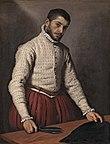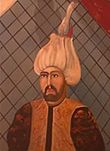The 1570s decade ran from January 1, 1570, to December 31, 1579.
| Millennium: | 2nd millennium |
| Centuries: | |
| Decades: | |
| Years: |
|
| Categories: |

Abraham Ortelius publishes the first modern atlas in 1570.
Events
1570
January–June
- January 9 – Ivan the Terrible begins the Massacre of Novgorod.
- January 23 – The assassination of Scottish regent James Stewart, 1st Earl of Moray, by James Hamilton (the first recorded assassination using a firearm), throws Scotland into civil war.
- February 8 – A magnitude 8.3 earthquake occurs in Concepción, Chile.
- February 15 – Venus occults Jupiter; this will next happen in 1818.
- February 25 – Pope Pius V excommunicates Queen Elizabeth I of England, with the bull Regnans in Excelsis.
- May 20 – Abraham Ortelius publishes the first modern atlas, Theatrum Orbis Terrarum, in Antwerp.
- May 24 – Battle of Manila: The Spanish, led by Martín de Goiti, defeat the forces of Rajah Sulayman.
- June 10 – The Kingdom of Livonia is established.
July–December
- July 3 – The Ottoman conquest of Cyprus begins.
- July 14 – Pope Pius V issues Quo primum, promulgating the 1570 edition of the Roman Missal.
- July 22 – Thomson Snell & Passmore was founded, the oldest law firm in operation
- July 30 – Battle of Anegawa: The allied forces of Oda Nobunaga and Tokugawa Ieyasu defeat the combined forces of the Azai and Asakura clans.
- August 8 – The Peace of Saint-Germain ends the Third War of Religion in France. Again, the Huguenots are promised religious freedom and political autonomy.
- August 16 – The Treaty of Speyer is signed between John Sigismund Zápolya, Prince of Transylvania and Maximilian II, King of Hungary.
- September 10 – A party of ten Spanish Jesuit missionaries land on the Virginia Peninsula of North America to establish the Ajacán Mission, which will be massacred in February 1571.
- November 16-17 – The 1570 Ferrara earthquake strikes the Italian city of Ferrara. After the initial shocks, a sequence of aftershocks continue for four years, with over 2,000 in the period from November 1570 to February 1571.[1]
Date unknown
- Spanish conquistador Juan de Salcedo (in the service of Miguel López de Legazpi) begins the conquest of the Kingdom of Maynila.
- Construction of the original Catedral Nuestra Señora de La Asunción, the oldest church in Venezuela, begins.
- The Whitechapel Bell Foundry is known to be in existence in London. By 2017, when it closes its premises in Whitechapel, it will be the oldest manufacturing company in Great Britain.
- Andrea Palladio publishes I quattro libri dell'architettura in Venice.
- Volcanic eruption in the Santorini caldera begins.
- The Andean population of the Viceroyalty of Peru reaches 1.3 million.
1571
January–June
- January 11 – The Austrian nobility are granted freedom of religion.
- January 23 – The Royal Exchange opens in London, England.
- c. February 4–9 – The Spanish Jesuit missionaries of the Ajacán Mission, established on the Virginia Peninsula of North America in 1570, are massacred by local Native Americans.
- March 18 – The Order of the Knights of Saint John transfers the capital of Malta, from Birgu to Valletta.
- May 24 – Moscow is burnt by the Crimean army, under Devlet I Giray.
- June 3 – Following the Battle of Bangkusay Channel, the conquest of the Kingdom of Maynila is complete, Spanish Conquistador Miguel López de Legazpi makes Manila a city, and the capital of the Philippines.
- June 25 – Queen Elizabeth's Grammar School, Horncastle, is founded in Lincolnshire, England.
- June 27 – Jesus College is established "within the City and University of Oxford of Queen Elizabeth's foundation" in England, by Welsh cleric and lawyer Hugh Price.[2]
July–December
- July 25 – St Olave's Grammar School is founded in Tooley Street, London.
- August 1 – The Ottoman conquest of Cyprus is concluded, by the surrender of Famagusta. Cyprus is established as an eyalet of the Ottoman Empire, and the first Turkish colony moves into the island.
- August 29 – Liliw, Laguna, Philippines is founded by Gat Tayaw, followers and residents as a municipality of Laguna.
- September 28 – The House of Commons of England introduces the first pro forma bill, symbolizing its authority over its own affairs.[3]
- October 7 – Battle of Lepanto: Spanish, Venetian, and Papal naval forces, under Don John of Austria, defeat the Ottoman fleet of Müezzinzade Ali Pasha.
Date unknown
- Using mercury in the silver extraction process dramatically increases the output of the Potosí mine; thus begins the great silver flow that links the New and Old Worlds.[4]
- The Swedish Church Ordinance 1571 creates the first complete order of the Protestant Swedish church. The church ordinance also includes a chapter about schooling, in which all children in the cities, regardless of sex, are to be given elementary schooling.[5]
- Taipalsaari was founded.
1572
January–June
- January 16 – Thomas Howard, 4th Duke of Norfolk, is tried for treason, for his part in the Ridolfi plot to restore Catholicism in England. He is executed on June 2.[6]
- February – Harrow School is founded, with a royal charter from Queen Elizabeth I of England.[7]
- February 13 – Elizabeth I of England issues a proclamation which revokes all commissions, on account of the frauds which they had fostered.
- April 1 – Capture of Brielle: The Sea Beggars, Netherlandish Calvinist rebels, capture the port city of Brielle. This leads to a wave of uprisings in Holland and Zeeland against Spanish Habsburg rule, leaving most of those provinces (with the exception of Amsterdam) under rebel control.
- May 13 – Pope Gregory XIII succeeds Pope Pius V, as the 226th pope.
- June 25 – The Sea Beggars capture the city of Gorkum; several Roman Catholic priests are imprisoned.
July–December
- July 9 – The Sea Beggars hang 19 previously imprisoned Roman Catholic priests (the Martyrs of Gorkum) at Brielle.
- July 11 – Humphrey Gilbert leads 1,500 volunteers from England, on an expedition to assist the Sea Beggars.[6]
- July 19 – Wanli Emperor of China ascends the throne at the age of nine; he will rule for 48 years.
- July 29–August 2 – Battle of Molodi: A large Crimean Tatar–Ottoman army which invaded Russia is routed.
- August 18 – Huguenot King Henry III of Navarre marries Margaret of Valois, sister of King Charles and daughter of Catherine de' Medici, in a supposed attempt to reconcile Protestants and Catholics in France.
- August 24 – St. Bartholomew's Day massacre: Catholics in Paris murder thousands of Protestants, including Gaspard de Coligny and Petrus Ramus, at the order of King Charles IX, with Catherine de Medici's connivance. Henry of Navarre and the Prince of Condé barely escape the same fate. This brings about the Fourth War of Religion in France.
- October 20 – Eighty Years' War – Relief of Goes: Soldiers of the Spanish Tercios wade across the estuary of the Scheldt, to relieve the siege of Goes in the Spanish Netherlands.
- November 9
- Siege of Sancerre: Catholic forces of the king lay siege to Sancerre, a Huguenot stronghold in central France. The fortified city holds out for nearly eight months, without bombard artillery. This is one of the last times that slings are used in European warfare.
- Supernova SN 1572 is first observed in the constellation Cassiopeia, by Cornelius Gemma. Tycho Brahe, who notes it two days later, will use it to challenge the prevailing view that stars do not change.[8] The supernova remnant remains visible through 1574.
- December – The Siege of Haarlem is begun by the Duke of Alva, Spanish commander in the Netherlands.
- December 23 – Theologian Johann Sylvan is executed in Heidelberg for his heretical Antitrinitarian beliefs.
Date unknown
- The Neo-Inca State in Vilcabamba, Peru, the last independent remnant of the Inca Empire, is conquered by Spain.
- Girolamo Mercuriale from Forlì (Italy) writes the work De morbis cutaneis ("On the diseases of the skin"), the first scientific tract on dermatology.
- Imaginary numbers are defined by Rafael Bombelli.
- Portugal's national epic Os Lusíadas by Luís de Camões is first published.[9]
- Georg Braun begins publication of his urban atlas, Civitates orbis terrarum, in Cologne.
1573
January–June
- January 25 – Battle of Mikatagahara in Japan: Takeda Shingen defeats Tokugawa Ieyasu.
- January 28
- Articles of the Warsaw Confederation are signed, sanctioning religious freedom in Poland.
- The Croatian–Slovene Peasant Revolt breaks out against the oppressive nobility; the revolt is quelled violently by February 15 and Matija Gubec, leader of the rebellion, publicly executed in Zagreb.
- February–March – The Siege of Noda Castle takes place in Japan.
- March 7 – The Ottoman–Venetian War (1570–1573) is ended by a peace treaty, confirming the transfer of control of Cyprus from the Republic of Venice to the Ottoman Empire, and also confirming Turkish occupation of the more fertile region of Dalmatia.
- May 11–16 – The Duke of Anjou is elected to the throne of the Polish–Lithuanian Commonwealth by the Polish nobility.
- May 26 – Battle of Haarlemmermeer: Geuzen ships, attempting to break the Siege of Haarlem, are defeated by a combined Spanish and Amsterdam fleet.
July–December
- July 6 – Córdoba, in the Viceroyalty of Peru, is founded by Jerónimo Luis de Cabrera.
- July 12 – Siege of Haarlem: Spanish forces under the Duke of Alva capture Haarlem, after a seven-month siege.
- July – The Edict of Boulogne is signed by Charles IX of France, granting limited rights to Huguenots, and ending the Fourth War of Religion in France.
- August – Alva begins to besiege Alkmaar in North Holland.
- August 27 – Oda Nobunaga drives the 15th Ashikaga shōgun Ashikaga Yoshiaki out of Kyoto, effectively destroying the Ashikaga shogunate, and historically ending the Muromachi and Sengoku periods. The Azuchi–Momoyama period of Japan begins.
- September 8–16 – Siege of Hikida Castle, Siege of Ichijōdani Castle in Japan: The Asakura clan is eliminated by Oda Nobunaga.
- September 22–26 – Siege of Odani Castle in Japan: The Azai clan is eliminated by Oda Nobunaga.
- October 8 – The Spanish abandon the siege of the city of Alkmaar.
- November 15 – Santa Fe, Argentina, is founded by Juan de Garay.
- November – Alva resigns as Spanish Governor-General and Commander-in-Chief in the Netherlands, and is succeeded by Luis de Requesens, who attempts to pursue a more conciliatory policy.
Date unknown
- Sarsa Dengel, emperor of Ethiopia, defeats the Oromo in a battle near Lake Zway.
- The first Spanish galleon, laden with silver for the porcelain and silk trade with the Ming Dynasty of China, lands at Manila in the Philippines. This occasion marks the beginning of the Spanish silver trade to China, that will trump that of the Portuguese, the latter of whom acted as an intermediary between the silver mines of Japan, and the luxury items in China to be purchased with that silver. Most of the silver entering China comes from what is now Mexico, Bolivia, and Peru in the New World.
- The Luzhou Laojiao liquor is made.
- The Portuguese are expelled from the Maldives.
- Queen Elizabeth's Grammar School for Boys, Barnet, England, is formed.[10]
1574
January–June
- February 23 – The fifth War of Religion against the Huguenots begins in France.
- April 14 – Battle of Mookerheyde: Spanish forces under Sancho de Avila defeat the rebel forces of Louis of Nassau, who is killed.
- May 30 – On the death of King Charles IX of France of a tubercular condition at the Château de Vincennes, he is succeeded by his brother King Henry of Poland, who becomes King Henry III of France. His mother, Catherine de' Medici, acts as Regent, until Henry arrives from Poland.
- June 10 – Manila, Philippines gains cityhood.
July–December
- August 30 – Guru Ram Das becomes the fourth of the Sikh gurus.
- September – A plot to assassinate John III of Sweden is discovered, headed by Charles de Mornay and implicating Charles Dancay, Hogenskild Bielke, Gustaf Banér, Pontus De la Gardie, Princess Elizabeth of Sweden, Princess Cecilia of Sweden, and Duke Charles.[11]
- October 3 – The city of Leiden, besieged by the Spanish, is relieved by a Sea Beggars fleet under Louis Boisot.
- November 22 – The Juan Fernández Islands in the South Pacific Ocean are discovered by Spanish sailor Juan Fernández.
- November 29 – Limahong and Juan de Salcedo quarrel during the Battle of Manila.
- December – Murad III succeeds Selim II, as Ottoman Sultan.
Undated
- Prince El-Mirza of Kakheti is defeated in his bid for the throne by his half-brother, Alexander II.
- The Liturgical Battle royal between the Reformation and Counter Reformation begins in Sweden, and continues until the Uppsala Synod of 1593.
- La Alameda, Seville, is laid out in Spain, as Europe's first public garden.[12]
1575
January–June
- January 21 – Queen Elizabeth I of England grants a monopoly on producing printed sheet music, to Thomas Tallis and William Byrd.[13]
- February 8 – William I of Orange founds Leiden University.
- February 13 – Henry III of France is crowned at Reims.
- February 14 – Henry III of France marries Louise de Lorraine-Vaudémont.
- March 3 – Battle of Tukaroi: The Mughal Empire decisively defeat the Karrani dynasty of Bengal.
- June 24 – William I of Orange marries Charlotte of Bourbon.
- June 28 – Battle of Nagashino: Oda Nobunaga defeats Takeda Katsuyori in Japan's first modern battle.
July–December
- July 7 – Raid of the Redeswire: Sir John Carmichael defeats Sir John Forster, in the last battle between England and Scotland.
- July 26 – Edmund Grindal succeeds Matthew Parker, as Archbishop of Canterbury.
- August 5 – Henry Sidney is appointed Lord Lieutenant of Ireland.
- October 10 – Battle of Dormans: Catholic forces under Henry I, Duke of Guise defeat the Protestants, capturing Philippe de Mornay among others.
- October 22 – The city of Villa de la Asunción (today Aguascalientes) is founded in New Spain, by permission from Philip II of Spain.
- December 16 – An earthquake hits Valdivia.
Date unknown
- Luanda, Angola is founded as Sao Paulo de Laonda by Paulo Dias de Novais
- Russians occupy Pernau in western Estonia, and the fortress of Weissenstein.
- The seat of the Audiencia Real in Chile moves from Concepción to Santiago.
- Abraham Ortelius becomes a geographer to Philip II of Spain.
- The bubonic plague decimates Venice.
- Gaspar da Cruz, a Portuguese Dominican friar, writes about his travels to the Ming Dynasty of China, including the Chinese civil service handbook The Bureaucratic System of the Ming Dynasty, and how the Chinese draw lots, to determine which days of the year are most auspicious or most ill-fated to travel upon.
1576
January–June
- January 20 – Viceroy Martín Enríquez de Almanza founds the settlement of León, Guanajuato in New Spain (modern-day Mexico).
- January 25 – Portuguese explorer Paulo Dias de Novais founds the settlement of São Paulo da Assumpção de Loanda on the south western coast of Africa, which becomes Luanda.
- 1st May – Hungarian Transylvanian Prince Stephen Báthory is crowned king of Poland.
- May 5 – The Edict of Beaulieu or Peace of Monsieur (after "Monsieur", the Duke of Anjou, brother of the King, Henry III of France, who negotiated it) ends the Fifth War of Religion in France. Protestants are again granted freedom of worship.
- June 18 – Battle of Haldighati: Mughal forces, led by Man Singh I of Amer, decisively defeat the Mewar Kingdom led by Maharana Pratap, and occupy Mewar.
July–December
- July 11 – English navigator Martin Frobisher sights Greenland.
- July 12 – Mughal Empire annexes Bengal after defeating the Bengal Sultanate at the Battle of Rajmahal.[14]
- August 11 – English navigator Martin Frobisher, on his search for the Northwest Passage, enters the bay now named after him.
- October – the Siege of Takabaru occurs in Japan, when the forces of Shimazu Takahisa besiege and take the fortress of Takabaru, which belonged to the Itō clan.
- November 2 – Rudolf II becomes Holy Roman Emperor.
- November 4 – Eighty Years' War – Sack of Antwerp: In the Low Countries, mutinous Spanish soldiers sack Antwerp; after three days the city is nearly destroyed.
- November 8 – Eighty Years' War – Pacification of Ghent: The States General of the Netherlands meet and unite to oppose pillaging Spanish mutineers.
- December
- The States-General of Blois declares itself against the Edict of Beaulieu, beginning the Sixth War of Religion in France.
- James Burbage opens London's first permanent public playhouse, The Theatre.[15]
Date unknown
- The 1576 Cocoliztli epidemic causes millions of deaths in the territory of New Spain, in modern-day Mexico.
- An early example of autobiography is written in English, by Thomas Whythorne.
- The Loci Communes of Peter Martyr Vermigli (d. 1562), edited by Robert le Maçon, are published in London.
- The following schools are founded in England:
- Dartford Grammar School, by William d'Aeth, Edward Gwyn and William Vaughn.
- Sutton Valence School, by William Lambe.
- Konstanty Wasyl Ostrogski founds Ostroh Academy, the first university-level school in Eastern Europe.
1577
January–June
- January 9 – The second Union of Brussels is formed, first without the Protestant counties of Holland and Zeeland (which is accepted by King Philip II of Spain), later with the Protestants, which means open rebellion of the whole of the Netherlands.
- March 17 – The Cathay Company is formed, to send Martin Frobisher back to the New World for more gold.
- May 28 – The Bergen Book, better known as the Solid Declaration of the Formula of Concord, one of the Lutheran confessional writings, is published. The earlier version, known as the Torgau Book (1576), had been condensed into an Epitome; both documents are part of the 1580 Book of Concord.
July–December
- September 17 – The Treaty of Bergerac is signed between Henry III of France and the Huguenots.
- November – The Great Comet of 1577 is observed from Earth.
- November 13 – The Battle of Tedorigawa: Uesugi Kenshin's forces decisively defeats the forces of Oda Nobunaga, however this will be Kenshin's last victory before passing away the next year.
- November 19 – The Siege of Shigisan: with defeat coming close Matsunaga Hisahide commits suicide.
- December 13 – Francis Drake leaves Plymouth, England, aboard the Pelican, with four other ships and 164 men, on an expedition against the Spanish, along the Pacific coast of the Americas, which will become his circumnavigation.
Date unknown
- Supposed massacre of the MacDonald inhabitants of the Scottish island of Eigg, by the Clan MacLeod.
- The church in San Pedro de Atacama is built, in the Atacama Desert in Chile.
- Casiodoro de Reina publishes his "Declaracion, o confesion de fe", the first and only Spanish confession of faith in the post Reformation period.
1578
January–June
- January 31 – Battle of Gembloux: Spanish forces under Don John of Austria and Alexander Farnese defeat the Dutch; Farnese begins to recover control of the French-speaking Southern Netherlands.
- April 27 – The Duel of the Mignons claims the lives of two favorites of Henry III of France, and two favourites of Henry I, Duke of Guise.
- May 26 – The Alteratie in Amsterdam ends Catholic rule, and open Catholic worship there.
- May 31 – Martin Frobisher sails from Harwich, England to Frobisher Bay, Canada, on his third expedition.
July–December
- July – Martin Frobisher holds the first Thanksgiving celebration by Europeans in North America, on Newfoundland. He ships ore, which proves to be valueless fool's gold, which can only be used as road metal in London.
- August 4 – Battle of Alcácer Quibir in North Africa: The Moors defeat King Sebastian of Portugal, who is killed, leaving his elderly uncle, Cardinal Henry, as his heir, initiating a succession crisis in Portugal.
- August 20–September 6 – Francis Drake, during his circumnavigation
, passes through the Strait of Magellan in his ship, the newly renamed Golden Hind.[16]
- October 1 – Alessandro Farnese succeeds Don John, as Governor of the Spanish Netherlands.
- October 21 – Battle of Wenden: The Russians are defeated by the Swedes, who proceed to take Polotsk.
Date unknown
- Battle of the Spoiling Dyke at Trumpan in northwest Scotland: the Clan MacLeod are victorious over the MacDonalds of Uist.
- The Ottoman Empire conquers Abkhazia.
- Sarsa Dengel, Emperor of Ethiopia, kills Bahr negus Yeshaq, finally ending his rebellion.
- Sonam Gyrso receives from Prince Atlan Khan the title of Talaï, and becomes the third Dalai Lama of Tibet.
- The last outbreak of sweating sickness occurs in England.
- The Portuguese assist Lord Ōmura Sumitada, the first Christian Japanese diamyo, in repulsing an assault on Nagasaki by the Ryūzōji clan.
- Fur trade begins in Newfoundland in North America.
1579
January–June
- January 6 – The Union of Atrecht unites the southern Netherlands under the Duke of Parma, governor in the name of king Philip II of Spain.
- January 23 – The Union of Utrecht unites the northern Netherlands in a confederation called the United Provinces. William I of Orange becomes Stadtholder, and the Duc d'Anjou, younger brother of Henry III of France, is invited to become hereditary sovereign.
- March – Maastricht is captured by the Spanish under Parma.
- May 25 – Japan – Battle of Mimaomote: Doi Kiyonaga defeats the forces of Kumu Yorinobu.
- June 17 – Francis Drake, during his circumnavigation of the world, lands in what is now California, which he claims for Queen Elizabeth I. With an English claim here and in Newfoundland, it becomes the basis for English colonial charters which will claim all land from the Atlantic to the Pacific, from "sea to sea." Drake's claim is called Nova Albion (New England), and subsequent maps will show all lands north of New Spain and New Mexico under this name.
- July 16 – James FitzMaurice FitzGerald lands with a small force of Irish, Spanish, and Italian troops at Smerwick, on the Dingle Peninsula in south-western Ireland, and commences the Second Desmond Rebellion against the rule in Ireland of Elizabeth I of England.
July–December
Date unknown
- Akbar abolishes jizya.
- The municipality of Boac in Marinduque, Philippines is founded.
- The Bible of Kralice begins publication. The first complete translation of the Bible into the Czech language (with notes), it is prepared by the Unity of the Brethren, and published at Kralice nad Oslavou, Bohemia.
Births
1570
- January 1
- January 19 – Wolfgang Hirschbach, German legal scholar (d. 1620)
- January 22 – Robert Bruce Cotton, English politician (d. 1631)
- February – Henry Balnaves, Scottish politician and religious reformer (b. 1512)
- March 25 – Henry Lennard, 12th Baron Dacre, English baron and politician (d. 1616)
- April 13 – Guy Fawkes, English conspirator (d. 1606)
- May 8 – Tamás Esterházy, Hungarian writer (d. 1616)
- May 22 – Johann II, Duke of Saxe-Weimar, German duke (d. 1605)
- June 7 – Sultan Murad Mirza, Mughal prince (d. 1599)
- June 13 – Paul Peuerl, German organist (d. 1625)
- August 10 – Philip, Duke of Holstein-Gottorp (1587–1590) (d. 1590)
- August 21 – Christopher, Duke of Brunswick-Harburg, co-ruler of Brunswick-Lüneburg-Harburg (1603–1606) (d. 1606)
- August 22 – Franz von Dietrichstein, German Catholic bishop (d. 1636)
- August 31 – Gustav of Saxe-Lauenburg, German noble (d. 1597)
- September 28 – Sir Richard Hoghton, 1st Baronet, English politician (d. 1630)
- October 3 – George Coke, British bishop (d. 1646)
- October 4 – Péter Pázmány, Hungarian cardinal and statesman (d. 1637)
- October 7
- November 1 – Phineas Pett, English shipwright and member of the Pett Dynasty (d. 1647)
- November 15 – Francesco Curradi, Italian painter (d. 1661)
- November 20 – Giovanni Battista Agucchi, Italian churchman, papal diplomat, and writer on art theory (d. 1632)
- November 26 – Christian, Duke of Schleswig-Holstein-Sonderburg-Ærø (1622–1633) (d. 1633)
- November 28 – James Whitelocke, English judge (d. 1632)
- December 7 – Richard Cecil, English politician (d. 1633)
- December 29 – Wilhelm Lamormaini, Luxembourgian theologian (d. 1648)
- date unknown
- Diego Aduarte, Prior of Manila (d. 1637)
- Robert Aytoun, Scottish poet (d. 1638)
- Ebba Bielke, Swedish baroness and conspirator (d. 1618)
- John Cooper, English composer and lutenist (d. 1626)
- John Farmer, English composer (d. c.1601)
- Simon Grahame, Scottish-born adventurer (d. 1614)
- Nakagawa Hidenari, Japanese daimyō (d. 1612)
- Hans Lippershey, Dutch lensmaker (d. 1619)
- Asprilio Pacelli, Italian Baroque composer (d. 1623)
- Girolamo Rainaldi, Italian architect (d. 1655)
- Salamone Rossi, Italian violinist and composer (d. 1630)
- John Smyth, English Baptist minister (d. 1612)
- Chief Powhatan, Algonquin chief (d. 1620)
- Claudia Sessa, Italian composer (d. 1617/19)
- Katharina Henot, German General Postmaster and alleged witch (d. 1627)
- Urszula Meyerin, politically influential Polish courtier (d. 1635)
1571
- January 9 – Charles Bonaventure de Longueval, Count of Bucquoy, French soldier in Habsburg service (d. 1621)
- January 27 – Abbas I of Safavid, Shah of Iran (d. 1629)
- February 15 – Michael Praetorius, German composer and writer on music (d. 1621)
- March 31 – Pietro Aldobrandini, Italian cardinal, archbishop (d. 1621)
- April 17 – Adam Contzen, German economist (d. 1635)
- April 22 – Giovanni Branca, Italian architect and engineer (d. 1645)
- April 24 – Sur Singh, Ruler of Marwar (d. 1619)
- May 11 – Niwa Nagashige, Japanese warlord (d. 1637)
- June 17 – Thomas Mun, English writer on economics (d. 1641)
- July 16 – Theodoor Galle, Flemish engraver (d. 1633)
- August 2 – Charles, Duke of Guise, son of Henry I (d. 1640)
- September 12 – Álvaro de Bazán, 2nd Marquis of Santa Cruz (d. 1646)
- September 21 – Giovanni Battista Magnani, Italian architect (d. 1653)
- September 29 – Caravaggio, Venetian artist (d. 1610)
- October 7
- October 15 – Jacob Matham, Dutch artist (d. 1631)
- October 18 – Wolfgang Ratke, German educational reformer (d. 1635)
- November 18 – Hippolytus Guarinonius, Italian physician and polymath (d. 1654)
- December 4 – Ferdinand, Prince of Asturias, Spanish prince (d. 1578)
- December 9 – Metius, Dutch mathematician and astronomer (d. 1635)
- December 20
- December 27 – Johannes Kepler, German astronomer (d. 1630)
- December 31 – Emperor Go-Yōzei of Japan (d. 1617)
- date unknown
- Henry Ainsworth, English Nonconformist clergyman and scholar (d. 1622)
- William Bedell, Anglican churchman (d. 1642)
- Willem Blaeu, Dutch cartographer (d. 1638)
- Charles Butler, English beekeeper and philologist (d. 1647)
- Frederick de Houtman, Dutch explorer (d. 1627)
- Esther Inglis, French (?British-born) calligrapher (d. 1624)
- Lucrezia Marinella, Italian poet and author (d. 1653)
- Paulus Moreelse, Dutch painter (d. 1638)
- Hugh Roe O'Donnell, Irish chieftain and rebel (d. 1603)
- Aleksander Ostrogski, Polish nobleman (d. 1603)
- Alessandro Peretti di Montalto, Venetian cardinal (d. 1623)
- Thomas Storer, English poet (d. 1604)
- Thomas Wintour, English Gunpowder Plot conspirator (d. 1606)
1572
- January 7 – Antoine de Gaudier, French Jesuit writer (d. 1622)
- January 11 – Elizabeth Wriothesley, Countess of Southampton, English countess (d. 1655)
- January 22 – John Donne (d. 1631)
- February 1 – Ellen Marsvin, Danish noble, landowner and county administrator (d. 1649)
- February 14 – William Cooke, English politician (d. 1619)
- February 27 – Francis II, Duke of Lorraine (d. 1632)
- February 29 – Edward Cecil, 1st Viscount Wimbledon, English viscount (d. 1638)
- March 4 – István Esterházy, Hungarian noble (d. 1596)
- March 10 – Tommaso Caracciolo, Field Marshal of Spanish forces in the Thirty Years' War (d. 1631)
- March 20 – Otto III, Duke of Brunswick-Harburg (d. 1641)
- April 4 – William Strachey, English writer (d. 1621)
- April 14 – Adam Tanner, Austrian Jesuit professor of mathematics and philosophy (d. 1632)
- May 20 – John Davenant, English Anglican bishop (d. 1641)
- May 25 – Maurice, Landgrave of Hesse-Kassel, German musician (d. 1632)
- June 8 – Honorat de Porchères Laugier, French writer (d. 1653)
- June 10 – Henry II, Count of Reuss-Gera, Lord of Gera, Lobenstein and Oberkranichfeld (1572–1635) (d. 1635)
- June 11 – Ben Jonson, English dramatist (d. 1637)
- July 16 – Teimuraz I, Prince of Mukhrani, Georgian prince (d. 1625)
- July 25 – Theodorus Schrevelius, Dutch Golden Age writer and poet (d. 1649)
- August 6 – Fakhr-al-Din II, Ottoman Emir of Chouf (d. 1635)
- September 11 – Daniyal, Imperial Prince of the Royal House of Timur, Viceroy of Deccan (d. 1604)
- September 27 – Francis van Aarssens, Dutch diplomat (d. 1641)
- September 30 – Denis-Simon de Marquemont, French cardinal and archbishop (d. 1626)
- October 27 – Marie Elisabeth of France, French princess (d. 1578)
- November 4 – William Whitmore, English politician (d. 1648)
- November 7 – Johannes Saeckma, Dutch Golden Age magistrate and judge of Leeuwarden (d. 1636)
- November 8 – John Sigismund, Elector of Brandenburg (d. 1619)
- November 23 – Albret Skeel, State Admiral of Denmark (d. 1639)
- November 25 – Daniel Sennert, German physician, chemist (d. 1637)
- December 1 – Vilem Slavata of Chlum, Czech nobleman (d. 1652)
- December 20 – Edward Russell, 3rd Earl of Bedford, son of Sir Francis Russell (d. 1627)
- December 22 – Juan López de Agurto de la Mata, Spanish Catholic prelate who served as Bishop of Coro (later Bishop of Caracas) (1634–1637) and Bishop of Puerto Rico (1630–1634) (d. 1637)
- December 27 – Johannes Vodnianus Campanus, Czech humanist, composer, pedagogue, poet and dramatist (d. 1622)
- date unknown
- Johann Bayer, German astronomer (d. 1625)
- Alfonso de la Cueva, 1st Marquis of Bedmar, Spanish diplomat (d. 1655)
- Arend Dickmann, Dutch admiral in the Polish Navy (d. 1627)
- John Floyd, English Jesuit (d. 1649)
- Regina Basilier, German-Swedish merchant banker (d. 1631)
- Bartholomew Gosnold, English lawyer and explorer (d. 1607)
- Cyril Lucaris, Greek prelate and theologian (d. 1637)
- James Mabbe, English scholar and poet (d. 1642)
- Thomas Tomkins, Welsh composer (d. 1656)
- probable – Giovanni Bernardino Azzolini or Mazzolini or Asoleni, Italian painter (d. c.1645)
1573
- January 1 – Philippus Rovenius, Dutch priest (d. 1651)
- January 10 – Simon Marius, German astronomer (d. 1624)
- January 18 – Ambrosius Bosschaert, still life painter of the Dutch Golden Age (d. 1621)
- January 20 – Alexander, Duke of Schleswig-Holstein-Sonderburg (d. 1627)
- January 22 – Ludwig Camerarius, German politician (d. 1651)
- January 30 – Georg Friedrich, Margrave of Baden-Durlach (1604–1622) (d. 1638)
- February 28 – Elias Holl, German architect (d. 1646)
- March 12 – Agnes Hedwig of Anhalt, Abbess of Gernrode, Electress of Saxony, Duchess of Schleswig-Holstein-Sønderborg-Plön (d. 1616)
- March 24 – Giovanni Doria, Spanish noble (d. 1642)
- April 6 – Margaret of Brunswick-Lüneburg, German noble (d. 1643)
- April 12 – Jacques Bonfrère, Flemish Jesuit priest, biblical scholar (d. 1642)
- April 13 – Christina of Holstein-Gottorp, Queen of Sweden (d. 1625)
- April 17 – Maximilian I, Elector of Bavaria (d. 1651)
- April 28 – Charles de Valois, Duke of Angoulême, natural son of Charles IX of France (d. 1650)
- May 12 – Henri, Duke of Montpensier, French noble (d. 1608)
- June 12 – Robert Radclyffe, 5th Earl of Sussex, British Earl (d. 1629)
- June 16 – Andries de Witt, Grand Pensionary of Holland (d. 1637)
- June 28 – Henry Danvers, 1st Earl of Danby, English noble (d. 1643)
- June – Juan Pau Pujol, Catalan composer and organist (d. 1626)
- July 12 – Pietro Carrera, Italian priest, painter and saint (d. 1647)
- July 14 – Bonaventure Hepburn, Scottish philologist and Minim friar (d. 1620)
- July 15 – Inigo Jones, English architect (d. 1652)[17]
- July 18 – Odoardo Fialetti, Italian painter (d. 1638)
- July 25 – Christoph Scheiner, German astronomer and Jesuit (d. 1650)
- July 29 – Philip II, Duke of Pomerania-Stettin (d. 1618)
- August 16 – Anne of Austria, Queen of Poland (d. 1598)
- August 25 – Elizabeth of Denmark, Duchess of Brunswick-Wolfenbüttel, German regent (d. 1626)
- September 8 – Georg Friedrich von Greiffenklau, Archbishop of Mainz (d. 1629)
- September 28 – Théodore de Mayerne, Swiss physician (d. 1654)
- September 29 – Robert Payne, English politician (d. 1631)
- October 6 – Henry Wriothesley, 3rd Earl of Southampton (d. 1624)
- October 7 – William Laud, Archbishop of Canterbury (d. 1645)
- October 11 – Jacobus Boonen, Dutch Catholic archbishop (d. 1655)
- November 3 – Catherine of Lorraine, Abbess of Remiremont (d. 1648)
- November 29 – Johannes Canuti Lenaeus, archbishop of Uppsala (d. 1669)
- November 30 – Aubert Miraeus, Belgian historian (d. 1640)
- December 6 – Odoardo Farnese, Italian Catholic cardinal (d. 1626)
- December 21 – Mathurin Régnier, French satirist (d. 1613)
- December 22 – Ernest Casimir I, Count of Nassau-Dietz (1606–1632) and Stadtholder of Groningen, Friesland and Drenthe (1625–1632) (d. 1632)
- December 23 – Giovanni Battista Crespi, Italian painter (d. 1632)
- date unknown
- Gabrielle d'Estrées, French royal mistress (d. 1599)
- Ukita Hideie, Japanese daimyō (d. 1655)
- Richard Johnson, English romance writer (d. 1659)
- Johannes Junius, Burgomeister of Bamberg (d. 1628)
- John Kendrick, English merchant (d. 1624)
- Oeyo, wife of Tokugawa Hidetada (d. 1626)
- Sigismund Báthory, Prince of Transylvania and of the Holy Roman Empire (d. 1613)
1574
- January 17 – Robert Fludd, English Rosicrucian and Paracelsian physicist (d. 1637)
- February 17 – Pedro Téllez-Girón, 3rd Duke of Osuna, Spanish nobleman and politician (d. 1624)
- March 4 – Carl Gyllenhielm, Swedish soldier and politician (d. 1650)
- March 5 – William Oughtred, English mathematician and Anglican minister (d. 1660)
- March 7 – John Wilbye, English composer (date of baptism) (d. 1638)
- April 27 – Philip Rubens, Flemish lawyer and older brother to painter Peter Paul Rubens (d. 1611)
- May 6 – Pope Innocent X (d. 1655)
- May 14
- Daniel Dumonstier, French artist (d. 1646)
- Francesco Rasi, Italian composer, singer, instrumentalist, poet (d. 1621)
- June 13 – Juan Alonso de Solis y Mendoza, Spanish Catholic prelate, Bishop of Puerto Rico (1635–1640) (d. 1640)
- June 20 – Wilhelm Kettler, Duke of Courland (d. 1640)
- June – Richard Barnfield, English poet (d. 1627)
- July 1 – Joseph Hall, English bishop and satirist (d. 1656)
- July 2 – Dorothea Maria of Anhalt, Duchess consort of Saxe-Weimar (1602–1605) (d. 1617)
- July 10 – Clara Maria of Pomerania-Barth, German noble (d. 1623)
- July 23 – Balthasar I Moretus, Flemish printer (d. 1641)
- August 2 – Sir Richard Beaumont, 1st Baronet, English politician (d. 1631)
- August 7 – Robert Dudley, styled Earl of Warwick, English explorer and geographer (d. 1649)
- August 28 – Frederick IV, Duke of Brunswick-Lüneburg (1636–1648) (d. 1648)
- August 30 – Albert Szenczi Molnár, Hungarian translator (d. 1634)
- September 6 – Luis Sotelo, Spanish Franciscan friar who died as a martyr in Japan (d. 1624)
- September 18 – Claudio Achillini, Italian philosopher, theologian, mathematician, poet, jurist (d. 1640)
- September 29 – Ludovic Stewart, 2nd Duke of Lennox, Scottish nobleman and politician (d. 1624)
- September – Thomas Gataker, English clergyman and theologian (d. 1654)
- October 25 – François de Sourdis, French Catholic cardinal (d. 1628)
- November 4 – Erycius Puteanus, Dutch humanist, philologist (d. 1646)
- November 5 – Charlotte de La Marck, French duchess (d. 1594)
- November 10 – Archduchess Maria Christina of Austria, Austrian archduchess (d. 1621)
- November 30 – Frederick of Solms-Rödelheim, imperial chamberlain, war and Obrist (d. 1649)
- December 8 – Maria Anna of Bavaria, Archduchess of Inner Austria (d. 1616)
- December 10 – Mikołaj Łęczycki, Polish Jesuit (d. 1653)
- December 12
- Adam Wenceslaus, Duke of Cieszyn (d. 1617)
- Anne of Denmark, queen of James VI of Scotland (d. 1619)
- December 15 – Samuel Besler, Polish composer (d. 1625)
- date unknown
- John Day, English dramatist (d. 1640)
- Wilhelm Kinsky, Bohemian nobleman (d. 1634)
- Claudio Pari, Sicilian composer
- Feng Menglong, Chinese poet (d. 1645)
1575
- January – Elizabeth Cecil, 16th Baroness de Ros (d. 1591)
- January 22 – Louis III, Cardinal of Guise (d. 1621)
- c. February 3 – Bernard of Wąbrzeźno, Polish Catholic priest and Benedictine monk (d. 1603)
- February 4 – Pierre de Bérulle, French cardinal and statesman (d. 1629)
- February 15 – Louis Gunther of Nassau, Count of Nassau-Katzenelnbogen (d. 1604)
- February 16 – Richard Carpenter, English priest and theologian (d. 1625)
- February 21 – Marten Pepijn, Flemish painter (d. 1643)
- February 27
- John Adolf, Duke of Holstein-Gottorp (1590–1616) (d. 1616)
- Anna of Holstein-Gottorp, countess consort of East Frisia (d. 1610)
- April 18 – Frederick Magnus, Count of Erbach-Fürstenau (1606–1618) (d. 1618)
- April 21 – Francesco Molin, Doge of Venice (d. 1655)
- April 26 – Marie de' Medici, queen of Henry IV of France (d. 1642)
- May 20 – Robert Heath, English judge and politician (d. 1649)
- May 30 – Diego Salcedo, Spanish bishop (d. 1644)
- June 15 – Lelio Biscia, Italian Catholic cardinal (d. 1638)
- June 24 – William Petre, 2nd Baron Petre, English peer and MP (d. 1637)
- June 26 – Anne Catherine of Brandenburg (d. 1612)
- July 2 – Elizabeth de Vere, Countess of Derby (d. 1627)
- July 11 – Thomas Berkeley, English politician (d. 1611)
- July 14 – Augustus, Prince of Anhalt-Plötzkau, German prince (d. 1653)
- July 28 – Fernando de Valdés y Llanos, Spanish Catholic archbishop (d. 1639)
- July 31 – Simon Steward, English politician (d. 1632)
- August 14 – Robert Hayman, English-born poet (d. 1629)
- August 15 – Diego, Prince of Asturias, Portuguese prince (d. 1582)
- August 18 – Countess Palatine Anna Maria of Neuburg, Duchess of Saxe-Altenburg (d. 1643)
- August 24 – William Burton, British antiquarian (d. 1645)
- November 4 – Guido Reni, Italian painter (d. 1642)
- November 26 – John Augustus, Count Palatine of Lützelstein, German count (d. 1611)
- December 4 – The Nun of Monza, Italian nun (d. 1650)
- December 18 – Michelagnolo Galilei, Italian lutenist and composer (d. 1631)
- date unknown
- Jakob Böhme, German mystic (d. 1624)
- David Calderwood, Scottish divine and historian (d. 1650)
- Concino Concini, 3rd Prime Minister of France (d. 1617)
- Anna Kostka, Polish noblewoman (d. 1635)
- Lionel Cranfield, 1st Earl of Middlesex, successful London merchant (d. 1645)
- William Parker, 4th Baron Monteagle (d. 1622)
- Arbella Stuart, Duchess of Somerset (d. 1615)
- Cyril Tourneur, English dramatist (d. 1626)
- Rory O'Donnell, 1st Earl of Tyrconnell (d. 1608)
- probable
- Vittoria Aleotti, Italian composer (d. c. 1620)
- Giambattista Basile, Italian poet (d. 1632)
- Edmund Bolton, English historian and poet (d. 1633)
- Clemente Tabone, Maltese landowner and militia member (d. 1665)[18]
1576
- January 4 – Archduchess Catherine Renata of Austria, Austrian archduchess (d. 1599)
- January 5 – Anne Turner, English murderer (d. 1615)
- January 12 – Petrus Scriverius, Dutch writer and scholar on the history of Holland and Belgium (d. 1660)
- February 2 – Alix Le Clerc, French Canoness Regular and foundress (d. 1622)
- February 10 – Festus Hommius, Dutch theologian (d. 1642)
- February 29 – Antonio Neri, Italian chemist (d. 1614)
- March 14 – Eric of Lorraine, Bishop of Verdun (d. 1623)
- March 31 – Countess Louise Juliana of Nassau, countess consort and a regent of the Palatinate (d. 1644)
- May 17 – Joam Mattheus Adami, Italian Jesuit missionary (d. 1633)
- May 24 – Elizabeth Carey, Lady Berkeley, English courtier (d. 1635)
- May 27 – Caspar Schoppe, German controversialist and scholar (d. 1649)
- June 6 – Giovanni Diodati, Swiss-born Italian Calvinist theologian and translator (d. 1649)
- June 16 – Giovanni Battista Viola, Italian painter (d. 1622)
- July 3 – Duchess Anna of Prussia, Electress consort of Brandenburg and Duchess consort of Prussia (d. 1625)
- September 22 – Philipp of Bavaria, German Catholic cardinal (d. 1598)
- October – Thomas Weelkes, English composer and organist (d. 1626)
- October 6 – Roger Manners, 5th Earl of Rutland, eldest surviving son of John Manners (d. 1612)
- October 7 – John Marston, English writer (d. 1634)
- October 12 – Thomas Dudley, Governor of Massachusetts Bay Colony (d. 1653)
- October 28 – Rudolph, Prince of Anhalt-Zerbst, Prince of Anhalt (1586–1603), then Prince of Anhalt-Zerbst (1603–1621) (d. 1621)
- October 30 – Enrico Caterino Davila, Italian historian and diplomat (d. 1631)
- November 6 – Charles Günther, Count of Schwarzburg-Rudolstadt (1605–1630) (d. 1630)
- November 17 – Roque Gonzales, Paraguayan missionary (d. 1628)
- November 18 – Philipp Ludwig II, Count of Hanau-Münzenberg (1580–1612) (d. 1612)
- November 27 – Shimazu Tadatsune, Japanese ruler of Satsuma (d. 1638)
- December 20 – Saint John Sarkander, Moravian priest (d. 1620)
- date unknown
- William Ames, English Protestant philosopher (d. 1633)
- John Carver, first governor of Plymouth Colony (d. 1621)
- Giulio Cesare la Galla, professor of philosophy at the Collegio Romano in Italy (d. 1624)
- Santino Solari, Swiss architect and sculptor (d. 1646)
- probable – Jesper Mattson Cruus af Edeby, Swedish soldier and politician (d. 1622)
1577
- January 9 – Anthony Irby, English politician (d. 1610)
- January 12 – Francesco Stelluti, Italian mathematician (d. 1652)
- January 13 – Hugh Audley, English moneylender/lawyer/philosopher (d. 1662)
- February 5 – Johann Baptist Grossschedel, German noble, alchemist and esoteric author (d. 1630)
- February 6 – Beatrice Cenci, Italian noblewoman who conspired to kill her father (d. 1599)
- February 7 – Francis Walsingham, English Jesuit (d. 1647)
- February 8 – Robert Burton, English scholar at Oxford University (d. 1640)
- February 15 – Jean Riolan the Younger, French anatomist (d. 1657)
- February 17 – Augustus, Duke of Saxe-Lauenburg, German noble (d. 1656)
- February 18 – Roger North, English politician (d. 1651)
- February 22 – Pieter Huyssens, Flemish architect (d. 1637)
- March 1 – Richard Weston, 1st Earl of Portland (d. 1635)
- March 2 – George Sandys, English traveller (d. 1644)
- March 5 – Franciscus Dousa, Dutch classical scholar (d. 1630)
- March 20 – Alessandro Tiarini, Italian Baroque painter of the Bolognese School (d. 1668)
- March 24 – Francis, Duke of Pomerania-Stettin, Bishop of Cammin (d. 1620)
- April 12 – King Christian IV of Denmark and Norway (d. 1648)
- April 26 – Countess Elisabeth of Nassau, French noble (d. 1642)
- May 20 – Philip de' Medici, Italian noble (d. 1582)
- May 31 – Nur Jahan, empress consort of the Mughal Empire (d. 1645)
- June 12 – Paul Guldin, Swiss Jesuit mathematician (d. 1643)
- June 28 – Peter Paul Rubens, Flemish painter (d. 1640)
- July 9 – Thomas West, 3rd Baron De La Warr, English governor of Virginia (d. 1618)
- July 21
- Anne de Montafié, Countess of Clermont-en-Beauvaisis, French countess (d. 1644)
- Adam Willaerts, Dutch painter (d. 1664)
- August 11 (bapt.) – Barnaby Potter, English Bishop of Carlisle (d. 1642)
- September 1 – Scipione Borghese, Italian Catholic cardinal and art collector (d. 1633)
- September 8 – Otto Heurnius, Dutch physician and philosopher (d. 1652)
- September 24 – Louis V, Landgrave of Hesse-Darmstadt from 1596 to 1626 (d. 1626)
- October 3 – Tobie Matthew, English Member of Parliament, later Catholic priest (d. 1655)
- October 6 – Ferdinand of Bavaria (d. 1650)
- October 11 – Jørgen Lunge, Danish politician (d. 1619)
- October 17
- Cristofano Allori, Italian portrait painter (d. 1621)
- Dmitry Pozharsky, Russian prince (d. 1642)
- November 2 – John Bridgeman, British bishop (d. 1652)
- November 4 – François Leclerc du Tremblay (d. 1638)
- November 10 – Jacob Cats, Dutch poet, jurist and politician (d. 1660)
- November 24 – Louis Philip, Count Palatine of Guttenberg, Palatinate-Veldenz (d. 1601)
- November 25 – Piet Pieterszoon Hein, Dutch admiral and privateer for the Dutch Republic (d. 1629)
- December 8 – Mario Minniti, Italian artist active in Sicily after 1606 (d. 1640)
- December 20 – Antonio Brunelli, Italian composer and theorist (d. 1630)
- December 25 – Petrus Kirstenius, German physician and orientalist (d. 1640)
- December 27 – William Howard, 3rd Baron Howard of Effingham, English politician and Baron (d. 1615)
- date unknown
- Christoph Besold, German jurist (d. 1638)
- Giacomo Cavedone, Italian painter (d. 1660)
- Robert Cushman, English Plymouth Colony settler (d. 1625)
- Kobayakawa Hideaki, Japanese samurai and warlord (d. 1602)
- William Noy, English lawyer and politician (d. 1634)
- Samuel Purchas, English travel writer (d. 1626)
- Meletius Smotrytsky, Ruthenian religious activist and author, who developed Church Slavonic grammar (d. 1633)
- Gerhard Johann Vossius, German classical scholar and theologian (d. 1649)
1578
- January 7 – Agnes of Solms-Laubach, Landgravine of Hesse-Kassel (d. 1602)
- January 10 – Christopher Clitherow, Lord Mayor of London and Member of Parliament (d. 1641)
- January 28 – Cornelius Haga, Dutch diplomat (d. 1654)
- March 18 – Adam Elsheimer, German artist working in Rome, who died at only thirty-two (d. 1610)
- April 1 – William Harvey, English physician (d. 1657)[19]
- April 14 – King Philip III of Spain (d. 1621)
- April 17 – Maximilian van der Sandt, Dutch theologian (d. 1656)
- May 11 – Christian Günther I, Count of Schwarzburg-Sondershausen (1601–1642) (d. 1642)
- June 5 – Claude, Duke of Chevreuse (d. 1657)
- June 13 – Thomas Finch, 2nd Earl of Winchilsea, Member of Parliament (d. 1639)
- July 9 – Ferdinand II, Holy Roman Emperor (d. 1637)
- July 21 – Philipp Hainhofer, German merchant, banker, diplomat and art collector (d. 1647)
- July 27 – Frances Howard, Duchess of Richmond, British duchess (d. 1639)
- July 31 – Countess Catharina Belgica of Nassau, regent of Hanau-Münzenberg (d. 1648)
- August 5 – Charles d'Albert, duc de Luynes, first duke of Chaulnes (d. 1621)
- August 10 – Matteo Rosselli, Italian painter (d. 1650)
- August 17
- Francesco Albani, Italian painter (d. 1660)
- Johann, Prince of Hohenzollern-Sigmaringen, first prince of Hohenzollern-Sigmaringen (d. 1638)
- August 24 – John Taylor, English poet who dubbed himself The Water Poet (d. 1653)
- September 11 – Vincenzo Maculani, Italian Catholic cardinal (d. 1667)
- September 17 – John Prideaux, English academic administrator and Anglican bishop (d. 1650)
- October 4 – Giovanni Francesco Guidi di Bagno, Italian Catholic cardinal (d. 1641)
- October 12 – Baldassare Aloisi, Italian painter (d. 1638)
- October 19 – Christine of Hesse-Kassel, Duchess of Saxe-Eisenach and Saxe-Coburg (d. 1658)
- November 4 – Wolfgang Wilhelm, Count Palatine of Neuburg, Duke of Jülich and Berg (1614–1635) (d. 1653)
- November 6 – Maximilian of Liechtenstein, Austrian nobleman and Imperial General (d. 1645)
- December 2 – Agostino Agazzari, Italian composer and music theorist (d. 1640)
- December 7 – Okaji no Kata, Japanese concubine of Tokugawa Ieyasu (d. 1642)
- December 20 – Henry of Lorraine, Duke of Mayenne, French noble (d. 1621)
- December 28 – Henry Bulstrode, English Member of Parliament (d. 1643)
- December 30 – Ulrik of Denmark, Danish prince-bishop (d. 1624)
- approx. date – Fede Galizia, Italian painter
- date unknown
- Giambattista Andreini, Italian actor and playwright (d. 1650)
- Yamada Arinaga, Japanese retainer of the Shimazu clan (d. 1668)
- Benedetto Castelli, Italian scientist (d. 1643)
- Thomas Coventry, 1st Baron Coventry, English lawyer (d. 1640)
- Iwasa Matabei, Japanese painter (d. 1650)
- Samuel Jordan, American colonial legislator (d. 1623)
- Grzegorz IV Radziwiłł, Polish magnate (d. 1613)
- François Ravaillac, killer of Henry IV of France (d. 1610)
- Ambrose Rookwood, English Gunpowder Plot conspirator (d. 1606)
- Francis Manners, 6th Earl of Rutland (d. 1632)
- Horio Tadauji, Japanese daimyō (d. 1604)
- Everard Digby, English conspirator (d. 1606)
1579
- January 1 – Jacob Dircksz de Graeff, Dutch mayor (d. 1638)
- January 4 – Willem Teellinck, Dutch pastor (d. 1629)
- January 7 – Juan Manuel Pérez de Guzmán, 8th Duke of Medina Sidonia, Spanish nobleman, Knight of the Order of the Golden Fleece (d. 1636)
- January 23 – Marie of Prussia, Margravine of Brandenburg-Bayreuth (d. 1649)
- January 27 – Antonio Tornielli, Italian Catholic prelate who served as Bishop of Novara (1636–1650) (d. 1650)
- February 9 – Johannes Meursius, Dutch classical scholar and antiquary (d. 1639)
- February 24 – Johann Jacob Grasser, Swiss poet, historian and theologian (d. 1627)
- March 23 – Francis Mansell, English academic (d. 1665)
- April 10 – Augustus the Younger, Duke of Brunswick-Lüneburg (d. 1666)
- April 12 – François de Bassompierre, French courtier (d. 1646)
- April 25 – García de Toledo Osorio, 6th Marquis of Villafranca, Spanish noble and politician (d. 1649)
- May 1 – Wolphert Gerretse, Dutch founder of the New Netherland Colony (d. 1662)
- May 2 – Tokugawa Hidetada, Japanese shōgun (d. 1632)
- June 17 – Louis I, Prince of Anhalt-Köthen, German prince (d. 1650)
- June 18 – Afonso Mendes, Patriarch of Ethiopia (d. 1659)
- July 2 – Janusz Radziwiłł, Lithuanian and Polish nobleman (d. 1620)
- July 6
- July 13 – Arthur Dee, English physician and alchemist (d. 1651)
- August 1 – Luis Vélez de Guevara, Spanish dramatist and novelist (d. 1644)
- August 18 – Countess Charlotte Flandrina of Nassau (d. 1640)
- August 21 – Henri, Duke of Rohan (d. 1638)
- August 23 – Thomas Dempster, Scottish scholar and historian (d. 1625)
- September 1
- John Frederick of Holstein-Gottorp, Prince-Bishop, German Catholic archbishop (d. 1634)
- Samuel Coster, Dutch writer (d. 1665)
- September 3 – Louis I, Count of Erbach-Erbach (1606–1643) (d. 1643)
- September 17 – Charles Howard, 2nd Earl of Nottingham, English noble (d. 1642)
- October 4 – Guido Bentivoglio, Italian cardinal (d. 1644)
- October 18 – Anthony Abdy, English merchant (d. 1640)
- November 7 – Juan de Peñalosa, Spanish painter (d. 1633)
- November 11 – Frans Snyders, Flemish painter (d. 1657)
- November 12 – Albrecht of Hanau-Münzenberg, German nobleman (d. 1635)
- November 16 – Federico Baldissera Bartolomeo Cornaro, Italian Catholic cardinal (d. 1653)
- December 9 – Martin de Porres, Peruvian monk, Roman Catholic saint (d. 1639)
- December 20 (bapt.) – John Fletcher, English dramatist (d. 1625)
- date unknown
- Jacob Astley, 1st Baron Astley of Reading, royalist commander in the English Civil War (d. 1652)
- Arthur Johnston, Scottish physician and poet (d. 1641)
- John Ogilvie, Scottish Jesuit, Roman Catholic saint (martyred 1615)
Deaths
1570
- January 8 – Philibert de l'Orme, French architect (b. 1510)
- January 23 – James Stewart, 1st Earl of Moray, regent of Scotland (assassinated) (b. c.1531)
- February 13 – Eleonora Gonzaga, Duchess of Urbino, politically active Italian duchess (b. 1493)
- February 20 – Johannes Scheubel, German mathematician (b. 1494)
- March 1 – Bernhard VII, Prince of Anhalt-Zerbst (b. 1540)
- March 16 – Ippolita Gonzaga, Italian nun (b. 1503)
- April 13 – Daniele Barbaro, Italian architect (b. 1514)
- July 3 – Aonio Paleario, Italian humanist and reformer (executed) (b. c. 1500)
- July 25 – Ivan Mikhailovich Viskovatyi, Russian diplomat
- August 4 – Marie Catherine Gondi, French court official (b. c. 1500)
- September 6 – Agostino Gallo, Italian agronomist (b. 1499)
- September 11 – Johannes Brenz, German theologian and Protestant Reformer (b. 1499)
- October 1 – Frans Floris, Flemish painter (b. 1520)
- October 18 – Manuel da Nóbrega, Portuguese Jesuit missionary in Brazil (b. 1517)
- October 20
- João de Barros, Portuguese historian (b. 1496)
- Francesco Laparelli, Italian architect (b. 1521)
- November – Jacques Grévin, French dramatist (b. 1539)
- November 21 – Ruxandra Lăpușneanu, Moldavian regent (b. 1538)
- November 27 – Jacopo Sansovino, Italian sculptor and architect (b. 1486)
- December 15 – Frederick III of Legnica, Duke of Legnica (b. 1520)
- date unknown
- François Bonivard, Swiss patriot and historian (b. 1496)
- Yi Hwang, Korean Confucian scholar (b. 1501)
- Francesco Primaticcio, Italian painter, architect, and sculptor (b. 1504)
- Tomás de Santa María, Spanish music theorist
1571
- January 3 – Joachim II Hector, Elector of Brandenburg (b. 1505)
- January 9 – Nicolas Durand de Villegaignon, French naval officer (b. 1510)
- January 13 – John, Margrave of Brandenburg-Küstrin (b. 1513)
- January 19 – Paris Bordone, Venetian painter (b. 1495)
- February 12 – Nicholas Throckmorton, English diplomat and politician (b. 1515)
- February 13 – Benvenuto Cellini, Italian artist (b. 1500)
- March 6 – Tsukahara Bokuden, Japanese swordsman (b. 1489)
- March 14 – John Sigismund Zápolya, King of Hungary (b. 1540)
- March 21
- Odet de Coligny, French cardinal and Protestant (b. 1517)
- Hans Asper, Swiss painter (b. 1499)
- April 6 – John Hamilton, Scottish prelate and politician (b. 1511)
- May 4 – Pierre Viret, Swiss theologian (b. 1511)
- May 29 – Joachim Mörlin, German Lutheran bishop (b. 1514)
- June 1 – John Story, English Catholic (martyred) (b. 1504)
- June 3 – Tarik Sulayman, Filipino chieftain
- June 7 – Francesco Corteccia, Italian composer (b. 1502)
- July 6 – Mōri Motonari, Japanese warlord (b. 1497)
- July 15 – Shimazu Takahisa, Japanese samurai and warlord (b. 1514)
- July 17 – Georg Fabricius, German poet (b. 1516)
- August 17 – Marco Antonio Bragadin, Venetian lawyer and military officer (b. 1523)
- September 4 – Matthew Stewart, 4th Earl of Lennox (b. 1516)
- September 23 – John Jewel, English Anglican bishop (b. 1522)
- October 7
- Dorothea of Saxe-Lauenburg, Danish queen, consort of Christian III of Denmark (b. 1511)
- Müezzinzade Ali Pasha, Ottoman statesmen and naval officer
- November 24 – Jan Blahoslav, Czech writer (b. 1523)
- December 14 – Lorenzo Strozzi, Italian Catholic cardinal (b. 1513)
- date unknown
- Titu Cusi, Incan ruler (b. 1529)
- Anna Vigfúsdóttir á Stóru-Borg, Icelandic landowner
- Setthathirath, Laotian king of Lan Na and Lan Xang (b. 1534)
- Jan Tarło, Polish noble
1572
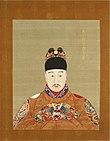
Longqing Emperorof China
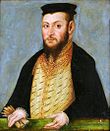
King Sigismund II Augustusof Poland
- January 22 – Henry VI, Burgrave of Plauen (b. 1536)
- January 26 – Pierre de Monte, French 50th Grandmaster of the Knights Hospitaller (b. 1499)
- February 21 – Cho Shik, Korean Confucian scholar and politician (b. 1501)
- February 23 – Pierre Certon, French composer (b. c. 1510)
- February 26 – Pedro Agustín, Spanish Roman Catholic bishop (b. 1512)
- February 28
- Aegidius Tschudi, Swiss historian (b. 1505)
- Catherine of Austria, Queen of Poland (b. 1533)
- Udai Singh II, King of Mewar (b. 1522)
- March 2 – Mem de Sá, Portuguese Governor-General of Brazil (b. c. 1500)
- March 10 – William Paulet, 1st Marquess of Winchester (b. c. 1483)
- March 27 – Girolamo Maggi, Italian Renaissance man (b. c. 1523)
- April 2 – Elisabeth of Brunswick-Lüneburg, Duchess of Guelders (1518–1538) (b. 1494)
- May 1 – Pope Pius V (b. 1504)
- May 11 – Moses Isserles, Polish Jewish rabbi and Talmudist (b. 1530)
- June 2 – Thomas Howard, 4th Duke of Norfolk (b. 1536)
- June 9 – Jeanne d'Albret, Queen of Navarre (b. 1528)
- June 28 – Johannes Goropius Becanus, Dutch physician, linguist, and humanist (b. 1519)
- July 5 – Longqing Emperor of China (b. 1537)
- July 7 – King Sigismund II Augustus of Poland (b. 1520)
- July 9
- John of Cologne, Dutch Franciscan friar, martyr and saint (b. 1510)
- Martyrs of Gorkum (b. Dutch nationality)
- Nicholas Pieck, Dutch Franciscan friar, martyr and saint (b. 1534)
- July 25 – Isaac Luria, Palestinian-born Jewish Kabbalist (b. 1534)
- August 20 – Miguel López de Legazpi, Spanish conquistador (b. 1502)
- August 24
- Gaspard de Coligny, French Protestant leader (b. 1519)
- Charles de Téligny, French soldier and diplomat (b. 1535)
- August 26 – Pierre de la Ramée, French humanist scholar (b. 1515)
- August – Claude Goudimel, French composer (b. 1510)
- September – Denis Lambin, French classical scholar (b. 1520)
- September 19 – Archduchess Barbara of Austria (b. 1539)
- September 24 – Túpac Amaru, last of the Incas
- September 30 – Francis Borgia, Italian Jesuit priest and saint (b. 1510)
- October 24 – Edward Stanley, 3rd Earl of Derby, English politician (b. 1508)
- October 25 – Cosimo Bartoli, Italian diplomat and writer (b. 1503)
- October 29 – John Erskine, Earl of Mar, regent of Scotland
- November 9 – Al-Mutahhar, Imam of the Zaidi state of Yemen (b. 1503)
- November 12 – Henry of Stolberg, German nobleman (b. 1509)
- November 23 – Agnolo di Cosimo (Bronzino), Italian artist and poet (b. 1503)
- November 24 – John Knox, Scottish religious reformer (b. 1513)
- December 2 – Ippolito II d'Este, Italian cardinal and statesman (b. 1509)
- December 12 – Loredana Marcello, Venetian dogaressa and botanist
- December 22 – François Clouet, French miniaturist (b. c. 1510)
- date unknown
- Andrzej Frycz Modrzewski, Polish scholar (b. 1503)
- Francisco de Moraes, Portuguese author and writer (b. 1500)
- Yasumi Naomasa, Japanese military commander
- Stanisław Zamoyski, Polish nobleman (b. 1519)
- probable – Christopher Tye, English composer and organist (b. 1505)
1573
- January 1
- Hans Boije af Gennäs, Swedish commander
- Johann Pfeffinger, German theologian (b. 1493)
- January 12 – William Howard, 1st Baron Howard of Effingham, English Lord High Admiral (b. 1510)
- February 7 – Hedwig Jagiellon, Electress of Brandenburg (b. 1513)
- March 2 – Johann Wilhelm, Duke of Saxe-Weimar (b. 1530)
- March 3 – Claude, Duke of Aumale, third son of Claude, Duke of Guise (b. 1526)
- March 13 – Michel de l'Hôpital, French statesman (b. 1505)
- April 2 – Otto Truchsess von Waldburg, German Catholic cardinal (b. 1514)
- April 7 – Andreas Masius, Flemish Catholic priest (b. 1514)
- April 29 – Guillaume Le Testu, French privateer (b. 1509)
- May 13 – Takeda Shingen, Japanese warlord (b. 1521)
- May 14 (bur.) – Richard Grafton, English merchant and printer (b. c.1506/7)
- June 15 – Antun Vrančić, Croatian archbishop (b. 1504)
- July – Étienne Jodelle, French dramatist and poet (b. 1532)
- July 7 – Giacomo Barozzi da Vignola, Italian architect (b. 1507)
- July 16 – Wigbolt Ripperda, mayor of Haarlem, Netherlands
- July 29
- John Caius, English physician (b. 1510)
- Ruy Gómez de Silva, Portuguese noble (b. 1516)
- August 14 – Saitō Tatsuoki, Japanese warlord (b. 1548)
- September 7 – Joanna of Austria, Princess of Portugal (b. 1535)
- September 16 – Asakura Yoshikage, Japanese warlord (b. 1533)
- September 23 – Azai Hisamasa, Japanese warlord (b. 1526)
- September 26 – Azai Nagamasa, Japanese warlord (b. 1545)
- October 27 – Laurentius Petri, first Lutheran Archbishop of Sweden (b. 1499)
- November 9 – Shimazu Katsuhisa, Japanese nobleman (b. 1503)
- November 17 – Juan Ginés de Sepúlveda, Spanish philosopher and theologian (b. 1494)
- December 30 – Giovanni Battista Giraldi, Italian novelist and poet (b. 1504)
- date unknown
- Paul Skalich, Croatian encyclopedist (b. 1534)
- Reginald Wolfe, English printer¨
- Maria van Schooten, Dutch war heroine (b. 1555)
- Murakami Yoshikiyo, Japanese warlord (b. 1501)
1574
- January 26 – Martin Helwig, German cartographer of Silesia (b. 1516)
- January 30 – Damião de Góis, Portuguese philosopher (b. 1502)
- March 4 – Anna II, Princess-Abbess of Quedlinburg, German noblewoman, reigning from 1516 until her death (b. 1504)
- March 27 – Takeda Nobutora, Japanese warlord (b. 1494)
- April 14 – Louis of Nassau, Dutch general (b. 1538)
- April 17 – Joachim Camerarius, German classical scholar (b. 1500)
- April 21 – Cosimo I de' Medici, Grand Duke of Tuscany (b. 1519)
- April 30 – Joseph Boniface de La Molle, Provençale lover of Marguerite de Valois (b. 1530)
- May 14 – Guru Amar Das, third Sikh Guru (b. 1479)
- May 3 – Giovanni Ricci, Italian Catholic cardinal (b. 1498)
- May 30 – King Charles IX of France (b. 1550)
- June 12 – Renée of France, French princess (b. 1510)
- June 14 – John III the Terrible, Voivoide of Moldavia (b. 1521)
- June 26 – Gabriel, comte de Montgomery, captain of the Scottish Guard of Henry II of France (b. 1530)
- June 27 – Giorgio Vasari, Italian painter and architect (b. 1511)
- July 26 – Birgitte Gøye, Danish county administrator, lady in waiting, landholder and educator (b. 1511)
- August 23 – Ebussuud Efendi, Ottoman Grand Mufti (b. 1490)
- August 27 – Bartolomeo Eustachi, Italian anatomist
- September 1 – Louis, Count of Stolberg, German noble (b. 1505)
- September 4 – Charles de Mornay, Swedish (originally French) court official, diplomat and royal favorite (b. 1514)
- September 15 – Margaret of France, Duchess of Berry (b. 1523)
- September 17 – Pedro Menéndez de Avilés, Spanish admiral and explorer (b. 1519)
- September 26 – Elisabeth of Anhalt-Zerbst, Abbess of Gernrode and Frose, Countess of Barby-Mühlingen (b. 1545)
- September 28 – Guidobaldo II della Rovere, Duke of Urbino, Italian condottiero (b. 1514)
- October 1 – Maarten van Heemskerck, Dutch painter (b. 1498)
- November 23 – John III, Count of Nassau-Saarbrücken, German noble (b. 1511)
- November 28 – Georg Major, German Protestant theologian (b. 1502)
- December 4 – Georg Joachim Rheticus, German mathematician and cartographer (b. 1514)
- December 12 – Selim II, Ottoman Sultan (b. 1524)
- December 26 – Charles, Cardinal of Lorraine (b. 1524)
- date unknown
- Hans Eworth, Flemish painter (b. 1520)
- Martin de Goiti, Spanish conquistador
1575
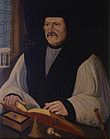
Reverend Matthew Parker
- January 4 – Sidonie of Saxony, Duchess of Brunswick-Calenberg (b. 1518)
- January 14 – Barbara Uthmann, German businessperson (b. 1514)
- January 22 – James Hamilton, Duke of Châtellerault (b. 1516)
- January 29 – Hernando de Aragón, Spanish Roman Catholic archbishop (b. 1498)
- February 9 – Karl Friedrich of Jülich-Cleves-Berg, heir apparent of Jülich-Cleves-Berg (b. 1555)
- February 20 – Maria of Jever, last ruler of the Lordship of Jever (b. 1500)
- February 21 – Claude of Valois, Duchess consort of Lorraine and French princess (b. 1547)
- March 11 – Matthias Flacius, Croatian Protestant reformer (b. 1520)
- March 15 – Annibale Padovano, Italian composer and organist (b. 1527)
- March 17 – Georg Cracow, German lawyer and politician (b. 1525)
- March 24 – Yosef Karo, Spanish-born Jewish rabbi. Author of the book "Shulchan Aruch" (b. 1488)
- April 15 – Wolrad II, Count of Waldeck (b. 1509)
- May 17 – Matthew Parker, English Roman Catholic archbishop (b. 1504)
- May 28 – Sophia Jagiellon, Duchess of Brunswick-Lüneburg (b. 1522)
- June 3 – Francisco de Ibarra, Spanish explorer and colonial governor in Mexico (b. c. 1539)
- June 7 – Sir George Heron, English politician
- June 28 – Yonekura Shigetsugu, Japanese samurai
- June 29
- Baba Nobuharu, Japanese samurai
- Hara Masatane, Japanese samurai (b. 1531)
- Naito Masatoyo, Japanese samurai (b. 1522)
- Sanada Nobutsuna, Japanese samurai (b. 1537)
- Takeda Nobuzane, Japanese daimyō
- Yamagata Masakage, Japanese samurai (b. 1524)
- July 14 – Richard Taverner, English Bible translator (b. 1505)
- July 29 – Jon Simonssøn, Norwegian humanist (b. 1512)
- August 2 – Christopher II, Margrave of Baden-Rodemachern (b. 1537)
- September 17 – Heinrich Bullinger, Swiss religious reformer (b. 1504)
- September 24 – Anna of Oldenburg, Regent of East Frisia (b. 1501)
- October 17 – Gaspar Cervantes de Gaeta, Spanish Roman Catholic cardinal (b. 1511)
- October 20 – Kaspar Eberhard, German theologian (b. 1523)
- October 24 – Peder Oxe, Danish finance minister (b. 1520)
- November 2 – Sabina of Brandenburg-Ansbach, German princess (b. 1529)
- December 1 – Diego Andrada de Payva, Portuguese theologian (b. 1528)
- December 23 – Akiyama Nobutomo, Japanese retainer (b. 1531)
- December 31 – Pierino Belli, Italian soldier and jurist (b. 1502)
- date unknown
- Constantio Varoli, Italian anatomist (b. 1543)
- Isabel de Josa, Catalan writer (b. 1508)
1576
- January 19 – Hans Sachs, German Meistersinger (b. 1494)
- January 27 – Mizuno Nobumoto, Japanese shōgun
- February 10 – Wilhelm/Guilielmus Xylander, German classical scholar (b. 1532)
- February 12 – John Albert I, Duke of Mecklenburg (b. 1525)
- March 5 – Luis de Requesens y Zúñiga, Spanish governor of the Netherlands (b. 1528)
- March 18 – Johann Stössel, German theologian (b. 1524)
- May 14 – Tahmasp I, Shah of Persia (b. 1514)
- May 30 – Harada Naomasa, Japanese samurai
- June 30 – Franciscus Sonnius, Dutch counter-Reformation theologian (b. 1506)
- July 2 – Josias Simler, Swiss scholar (b. 1530)
- July 11 – Eleonora di Garzia di Toledo, Italian noble (d. 1553)
- July 16 – Isabella de' Medici, Italian noble (d. 1542)
- August 15 or August 22 – Bálint Bakfark, Hungarian composer and lutenist (b. 1507)
- August 27 – Titian, Italian painter (b. c. 1489)
- September 21 – Gerolamo Cardano, Italian mathematician, physician, astrologer and gambler (b. 1502)
- September 22 – Walter Devereux, 1st Earl of Essex (b. 1541)
- October 12 – Maximilian II, Holy Roman Emperor (b. 1527)
- October 14 – Konrad Heresbach, German Calvinist (b. 1496)
- October 26 – Frederick III, Elector Palatine, ruler from the house of Wittelsbach (b. 1515)
- November 4 – John Paulet, 2nd Marquess of Winchester (b. c. 1510)
- November 9 – Chamaraja Wodeyar IV, King of Mysore (b. 1507)
- date unknown
- Paula Vicente, Portuguese artist, musician and writer (b. 1519)
- probable
- Anthony More, Dutch portrait painter (b. 1512)
- Nicola Vicentino, Italian music theorist and composer (b. 1511)
1577
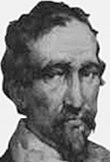
Saint Cuthbert Mayne
- January 23 – Nicolas, Duke of Mercœur, Roman Catholic bishop (b. 1524)
- February – Adam von Bodenstein, Swiss alchemist and physician (b. 1528)
- February 26 – King Eric XIV of Sweden (b. 1533)[20]
- March 23 – Charles II, Margrave of Baden-Durlach (b. 1529)
- April 13 – Konrad Hubert, German theologian and hymnwriter (b. 1507)
- May – Richard Aertsz, Dutch painter (b. 1482)
- May 5 – Viglius, Dutch statesman (b. 1507)
- May 31 – García Álvarez de Toledo, 4th Marquis of Villafranca, Spanish noble and admiral (b. 1514)
- June 4 – Alvise I Mocenigo, Doge of Venice (b. 1507)
- June 7 – Daniel, Count of Waldeck (b. 1530)
- June 12 – Orazio Samacchini, Italian painter (b. 1532)
- July 23 – Scipione Rebiba, Italian cardinal (b. 1504)
- July 26 – Blaise de Lasseran-Massencôme, seigneur de Montluc, Marshal of France (b. 1502)
- August 12 – Thomas Smith, English scholar and diplomat (b. 1513)
- September 7 – Infanta Maria of Guimarães (b. 1538)
- September 27 – Diego de Covarubias y Leyva, Spanish jurist and archbishop of Cuenca (b. 1512)
- October 3 – Henry IX, Count of Waldeck (b. 1531)
- October 7 – George Gascoigne, English poet (b. c. 1525)
- October 10 – Maria of Portugal, Duchess of Viseu (b. 1521)
- November 19 – Matsunaga Hisahide, Japanese warlord (b. 1508)
- November 29 – Cuthbert Mayne, English saint (b. 1543)
- December 4 – Achilles Gasser, German physician and astrologer (b. 1505)
- December 18 – Anna of Saxony, princess consort of Orange (b. 1544)
1578
- January 5 – Giulio Clovio, Dalmatian painter (b. 1498)
- January 6 – Queen Inseong, Korean royal consort (b. 1514)
- January 25 – Mihrimah Sultan, Sultan Suleiman's daughter (b. 1522)
- February 5 or 1579 – Giovanni Battista Moroni, Italian painter (b. 1510)
- February 12 – Catherine of Austria, Queen of Portugal (b. 1507)
- March 3
- Sebastiano Venier, Doge of Venice (b. 1496)
- Michael Kantakouzenos Şeytanoğlu, Ottoman Greek magnate (b. 1510)
- March 7 – Margaret Douglas, Countess of Lennox (b. 1515)
- March 29
- Arthur Champernowne, English admiral (b. 1524)
- Louis I, Cardinal of Guise, French cardinal (b. 1527)
- April 2 – Marie Elisabeth of France, French princess (b. 1572)
- April 11 – Joanna of Austria, Grand Duchess of Tuscany, Austrian Archduchess (b. 1547)
- April 14 – James Hepburn, 4th Earl of Bothwell, consort of Mary, Queen of Scots (b. 1535)
- April 19 – Uesugi Kenshin, Japanese samurai and warlord (b. 1530)
- May 4 – Martin Eisengrein, German theologian (b. 1535)
- June 16 – Ioan Potcoavă, Russian Cossack ataman
- July 2 – Thomas Doughty, English explorer (executed)
- July 5 – Cristoforo Madruzzo, Italian Catholic cardinal (b. 1512)
- July 27 – Jane Lumley, English translator (b. 1537)
- August 4
- King Sebastian of Portugal (b. 1554)
- Thomas Stukley, English adventurer (b. 1525)
- Abu Marwan Abd al-Malik I Saadi, King of Morocco
- Abu Abdallah Mohammed II Saadi, King of Morocco
- August 8 – Amago Katsuhisa, Japanese nobleman (b. 1553)
- August 11 – Pedro Nunes, Portuguese mathematician (b. 1502)
- August 16 – Andrew Corbet, English landowner and politician (b. 1522)
- August 20 – Yamanaka Yukimori, Japanese samurai (b. 1545)
- September – Pierre Lescot, French architect (b. 1510)
- September 3 – Giulio della Rovere, Italian Catholic cardinal (b. 1533)
- September 22 – Archduke Wenceslaus of Austria (b. 1561)
- October 1 – Don John of Austria, military leader (b. 1547)
- October 12 – Cornelius Gemma, Dutch astronomer and astrologer (b. 1535)
- October 18 – Ferdinand, Prince of Asturias, Spanish prince (b. 1571)
- December 3 – Gonzalo II Fernández de Córdoba, Governor of the Duchy of Milan (b. 1520)
- December – Nicholas Heath, Archbishop of York and Lord Chancellor of England (b. 1501)
- date unknown – Sabina, Duchess of Bavaria (b. 1528)
1579
- February 5 – Countess Palatine Helena of Simmern, Countess consort of Hanau-Münzenberg (1551-1561) (b. 1532)
- February 16 – Gonzalo Jiménez de Quesada, Spanish explorer (b. 1509)
- February 20 – Nicholas Bacon, English politician (b. 1509)
- March 12 – Alessandro Piccolomini, Italian humanist and philosopher from Siena (b. 1508)
- April 25 – John Stuart, 4th Earl of Atholl
- May 6 – François de Montmorency, French nobleman (b. 1530)
- May 20 – Isabella Markham, English courtier (b. 1527)
- June 17 – Johannes Stadius, German astronomer, astrologer, mathematician (b. 1527)
- June 25 – Hatano Hideharu, Japanese samurai (b. 1541)
- July 3 – Edward Fitton, the elder, Irish politician (b. 1527)
- August 5 – Stanislaus Hosius, Polish Catholic cardinal (b. 1504)
- August 12 – Domenico Bollani, Bishop of Milan (b. 1514)
- October 11 – Sokollu Mehmed Pasha, Turkish Janissary and Grand Vizier (b. 1505)
- October 13 – William Drury, English politician (b. 1527)
- October 21 – Tanegashima Tokitaka, Japanese Daimyo (b. 1528)
- October 24 – Albert V, Duke of Bavaria (b. 1528)
- November 9 – Philip VI, Count of Waldeck (1567–1579) (b. 1551)
- November 15 – Francis David, Hungarian religious reformer (b. 1510)
- November 21 – Thomas Gresham, English merchant and financier (b. 1519)
- date unknown
- Giovanni Battista Adriani, Italian historian (b. c. 1512)
- Diego de Landa, Spanish Bishop of the Yucatán (b. 1524)
- Hieronim Jarosz Sieniawski, Polish noble (b. 1516)
- William Whittingham, English Biblical scholar and religious reformer (b. 1524)
- Voravongsa I, Laotian king of Lan Xang
- probable - Hans Staden, German adventurer (b. 1525)
References
- ^ Guidoboni, Emanuela. "Terremoti a Ferrara e nel suo territorio: un rischio sottovalutato". Ferrara, voci di una città. Fondazione Cassa di Risparmio di Ferrara. Retrieved July 21, 2011.
- ^ Hibbert, Christopher, ed. (1988). The Encyclopædia of Oxford. London: Macmillan. p. 198. ISBN 0-333-39917-X.
- ^ "The Library of Parliament's research tool for finding information on legislation". Library of Parliament. 2010-01-28. Archived from the original on February 2, 2010. Retrieved 28 January 2010.
- ^ "Epic World History: Potosí (Silver Mines of Colonial Peru)". epicworldhistory.blogspot.com. 2015. Retrieved 1 May 2015.
In 1571, after numerous trials, the Spanish perfected the techniques for refining Potosí's silver ore with Huancavelica's mercury, prompting Viceroy Francisco de Toledo to gush that the union of the two mines would create the world's greatest marriage.
- ^ Du Rietz, Anita, Kvinnors entreprenörskap: under 400 år, 1. uppl., Dialogos, Stockholm, 2013
- ^ a b Williams, Hywel (2005). Cassell's Chronology of World History. London: Weidenfeld & Nicolson. pp. 226–229. ISBN 0-304-35730-8.
- ^ Tyerman, Christopher (2000). A History of Harrow School. Oxford University Press. pp. 8–17. ISBN 0-19-822796-5.
- ^ University of Otago Library exhibition note for The Earth & Beyond Archived February 12, 2012, at the Wayback Machine; Allen, R. H. Star Names: their Lore and Meaning, Bill Thayer's edition at LacusCurtius, "Cassiopeia."
- ^ "The Lusiads". World Digital Library. 1800–1882. Retrieved 2013-08-31.
- ^ "Queen Elizabeth's boys' grammar has been doing its own thing since 1573". The Independent. 9 April 2014. Retrieved 10 June 2019.
- ^ Karin Tegenborg Falkdalen (2010). Vasadöttrarna ['The Vasa Daughters']. Falun: Historiska Media. ISBN 978-91-85873-87-6 (In Swedish)
- ^ Albardonedo Freire, Antonio José (2002). El urbanismo de Sevilla durante el reinado de Felipe II. Sevilla: Guadalquivir. pp. 191–208. ISBN 84-8093-115-9.
- ^ "Thomas Tallis". Encyclopædia Britannica Online.
- ^ Richards, John F. (1996). The Mughal Empire. Cambridge University Press. p. 33. ISBN 978-0-521-56603-2.
- ^ Palmer, Alan; Veronica (1992). The Chronology of British History. London: Century Ltd. pp. 156–159. ISBN 0-7126-5616-2.
- ^ "Voyage of the Golden Hind". The Golden Hind. Brixham. 2012. Archived from the original on January 17, 2013. Retrieved September 2, 2013.
- ^ "Inigo Jones | English architect and artist". Encyclopedia Britannica. Retrieved 10 June 2019.
- ^ Bugeja, Anton (2014). "Clemente Tabone: The man, his family and the early years of St Clement's Chapel" (PDF): 42–57. Archived from the original on 20 June 2018.
- ^ "BBC - History - William Harvey". www.bbc.co.uk. Retrieved 26 October 2020.
- ^ "Erik XIV | king of Sweden". Encyclopedia Britannica. Retrieved 11 December 2020.

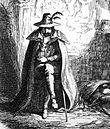
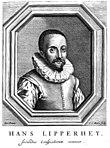
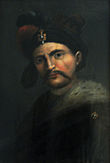
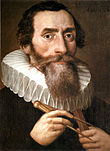


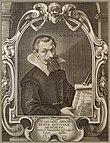
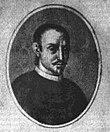
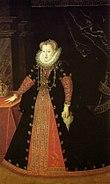

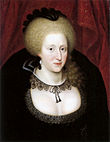
.jpg)
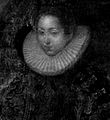

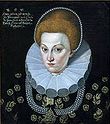

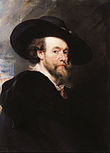
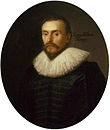
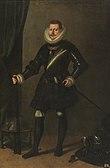
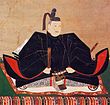
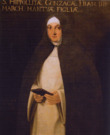



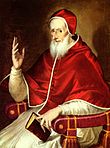
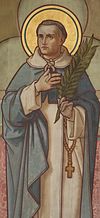
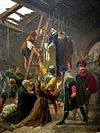
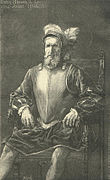
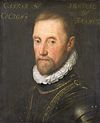
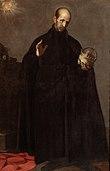
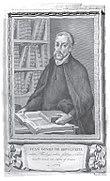
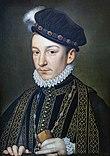
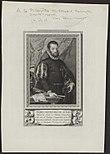
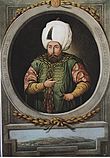
_-_Hernando_de_Arag%c3%b3n_(1560-1570).jpg)

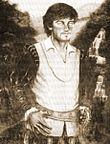

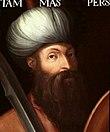
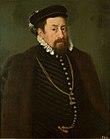
_Domenicus_Verwildt.jpg)
